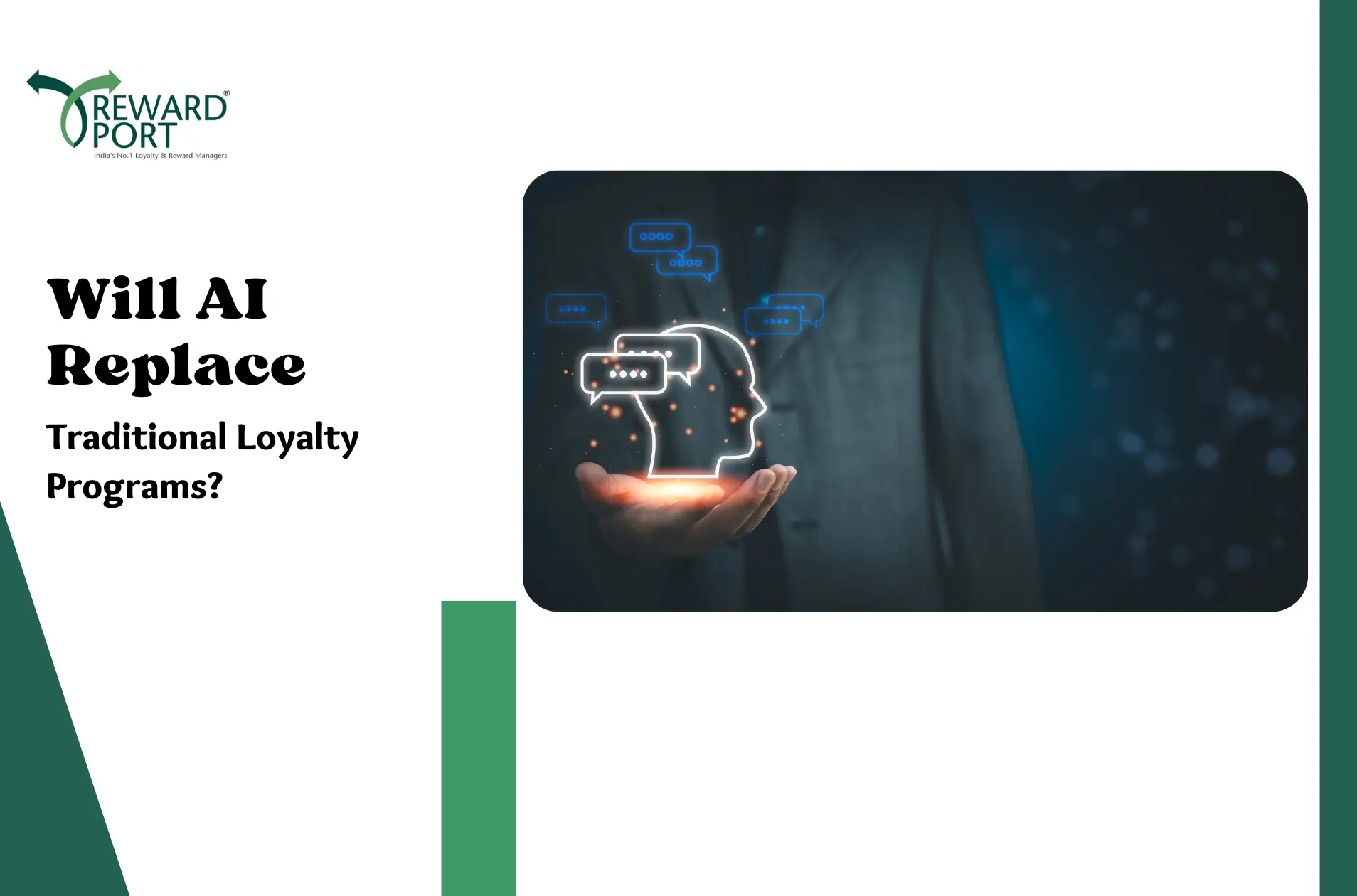
Will AI Replace Traditional Loyalty Programs?
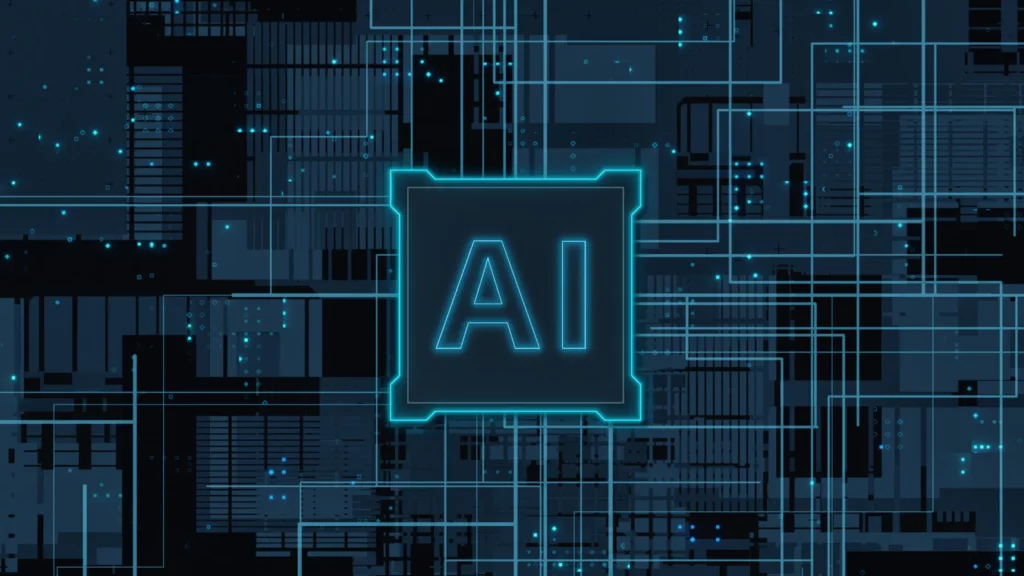
The face of customer loyalty is changing constantly with the increasing cut-throat competition between companies. There are a hell lot of retail options available to customers. So what makes a person choose one over another? And there comes the most basic customer retention techniques- rewards for their loyalty. They have made themselves as Loyalty Rewards Company – a give-away reward to retain their customers. But is it the future? Do customers really want to be engaged in this way only?
The future is Artificial Intelligence. AI will help in gaining a foothold in this very competitive environment. AI consists of speech recognition, natural language understanding for creating better intelligent assistants. They will help customers with accessing information and completing tasks. AI will result in better business processes and customer orientation. The urge is there from customer side to make it more personalized and nothing can do it better with Machine Learning, which is a part of AI. Companies like Nectar are leveraging upon the technology giving their customers more personalized offers and they are very successful. As more customers use their Loyalty Rewards Programs and other digital channels, the better the machine learns about what is relevant for them. Customers are more likely to shop with retailers that deliver more personalized experiences.
Machine learning will totally eliminate the guessing work, it uses the data & analytics to provide the most likely predictions. Loyalty Reward Management programs basically will be utilizing the customer’s prior behavior on certain set of rules. For example, AI facilitates virtual assistants that can monitor the customers on the basis of their engagement in good behavior and then they could be rewarded for it. This reward would lead to more loyal behavior, and all of this will be done without any human interference. Further, this will significantly reduce the marketing cost since they would be targeting only the most relevant customers.
In the very future only, machine learning and AI would be touching every industry and customer loyalty is no different. A Loyalty program company which will use AI and Machine learning will no longer have different teams working on different campaigns for designing and managing offers schemes and discounts for their customers. So, with the help of Machine learning, they would not have to push 200 offers to everyone, but to push 20 offers for 20 type of audience which would have a higher conversion rate with low cost.
Also, the ability to deliver real-time personalized offers based on the ever-learning algorithms will completely replace the traditional loyalty programs. AI will disrupt business functions in nearly every industry. Different loyalty rewards companies are heading towards adopting this technology for better retention of their customers.
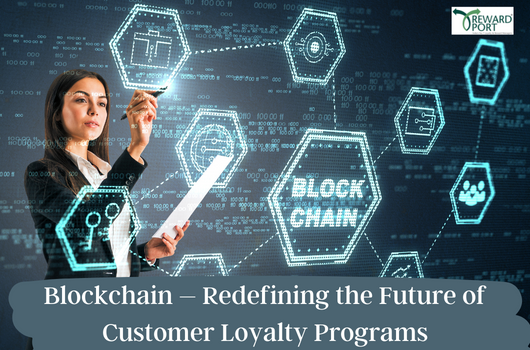
Blockchain – Redefining the Future of Customer Loyalty Programs
Loyalty programs have slowly made their presence felt across travel, retail, financial services, and other business sectors. And since technology is progressive in nature, they are seeking for some kind of disruptive innovation that would turn them more consumer-friendly.
Currently, companies are trying to implement new technologies that would suit their ever-growing needs. Blockchain is the next level innovation in this aspect and according to experts, it will bring the same change to banking what internet bought to media. Blockchain has become the first native digital currency for peer-to-peer value exchange.
It acts like a redemption for consumers since it provides them a single platform to access multiple loyalty programs. For example, imagine keeping only one wallet for all loyalty points and you don’t have to hunt for different options, limitations and redemption rules.
Apart from that, there are a host of benefits for which Blockchain will redefine the future of all financial transactions in near future. Let’s explore.
1. It’s fast
The decentralized approach of blockchain diminishes the complications between buyer and merchant. Many stakeholders make e-commerce transactions unnecessarily complicated by involving parties that makes the process complicated by adding additional function and bureaucratic steps. Blockchain eliminates the need of a centralized authority, so the money can travel instantly in real-time.
2. It’s cheap
Blockchain reduces a lot of costs. All kinds of loyalty and financial transactions run through a lot of complex network of vendors, banks and payment processors.
Blockchain removes all unnecessary third parties by allowing cheap and timeless peer-to-peer transactions. For any online transaction, a consumer ends up paying somewhere around 7% extra which can be minimized by switching to alternative mood of payments.
3. It’s Transparent
Transparency is one of the most salient features of Blockchain. Since it follows a distributed public ledger system, it’s possible to track every bit of information of a transaction.
In e-commerce, marketplaces and brands usually keeps all information by themselves and charges the trader to pass them. Blockchain solves this issue by making all data visible and allows all involved parties to access data for free.
4. It’s secured
Blockchain uses certain security system which is decentralized and immutable in nature. In case of any kind of data loss, it can be traced back easily.
5. It’s easily accessible
Blockchain is digital in nature and by implementing it, a lot of additional costs can be minimized. By nature it’s less costly and has lots of potential to divert people’s minds to purchase and participate in global economy. And since it’s decentralized, the same loyalty points can be used for various purposes.
Blockchain is almost similar to the existing loyalty and transaction programs, except that it is cheaper and faster. In a country like India, it’s still early to declare it as the ultimate redemption for the existing loyalty programs since Indian government has not completely legalized it yet.
But its transparent nature is a major step towards democratizing economy and bringing the power of economy back to people.

How loyalty is acting as a game changer in the e-commerce industry
The e-commerce industry has revolutionised the way consumers think and purchase items. People love to shop online for all the convenience and benefits e-shopping brings with it. Consumers can shop anytime and anywhere for everyday or luxe products, save fuel cost, avoid traffic jams, and bypass crowded payment queues.
The list is just endless. On top of that, a good customer loyalty program — that is simple to access — keeps the customers motivated and hooked for a substantial period of time.
The old patterns of consumer behaviour do not hold true in today’s digital age. So a customer loyalty program, that is constantly evolving according to millenials’ demands and industry trends, is definitely the way to go. A successful loyalty program depends on how effectively the consumer data is studied.
With the right approach and proper discipline, a set of new benefits excites customers to shop at a reasonable cost. The old benefits, that are no longer serving any purpose, are eliminated from the program.
A game-changing loyalty program not only leads to an increase in sales but also results in new customer acquisition and better reputation for the business. A better brand image is definitely a good sign for overall business operations.
According to studies, it is the idea of a reward that makes most customers happy. The idea of saving money only comes after that. Since any great loyalty brings with it new customers and ups the sales, it helps the brand to reduce marketing costs to a great extent.
On top of that, existing customers are far more likely to buy from the same brand again and again. Therefore, to keep them loyal is far more handy than to target new customers.
Also, since these customers are already familiar with the company’s products and services, they are more cost-effective to serve! Reduction in cost to company and honest feedback are the two things that a business can rely on their loyal consumer base for.
Although many e-retailers understand the concept of customer loyalty fully and how important it is, many of them are lacking in effort for a sustained loyalty program. So there seems to be a disconnection. Still others don’t keep an accurate tab on how these programs are performing, even after they have been set into motion.
The idea is to recognise the prime market and construct a plan that makes new customers loyal and keeps the loyal ones excited and looking forward to the brand’s new products. This has also proven to be helpful in beating competitors — that serve the same products and services — thereby gaining an edge over them!
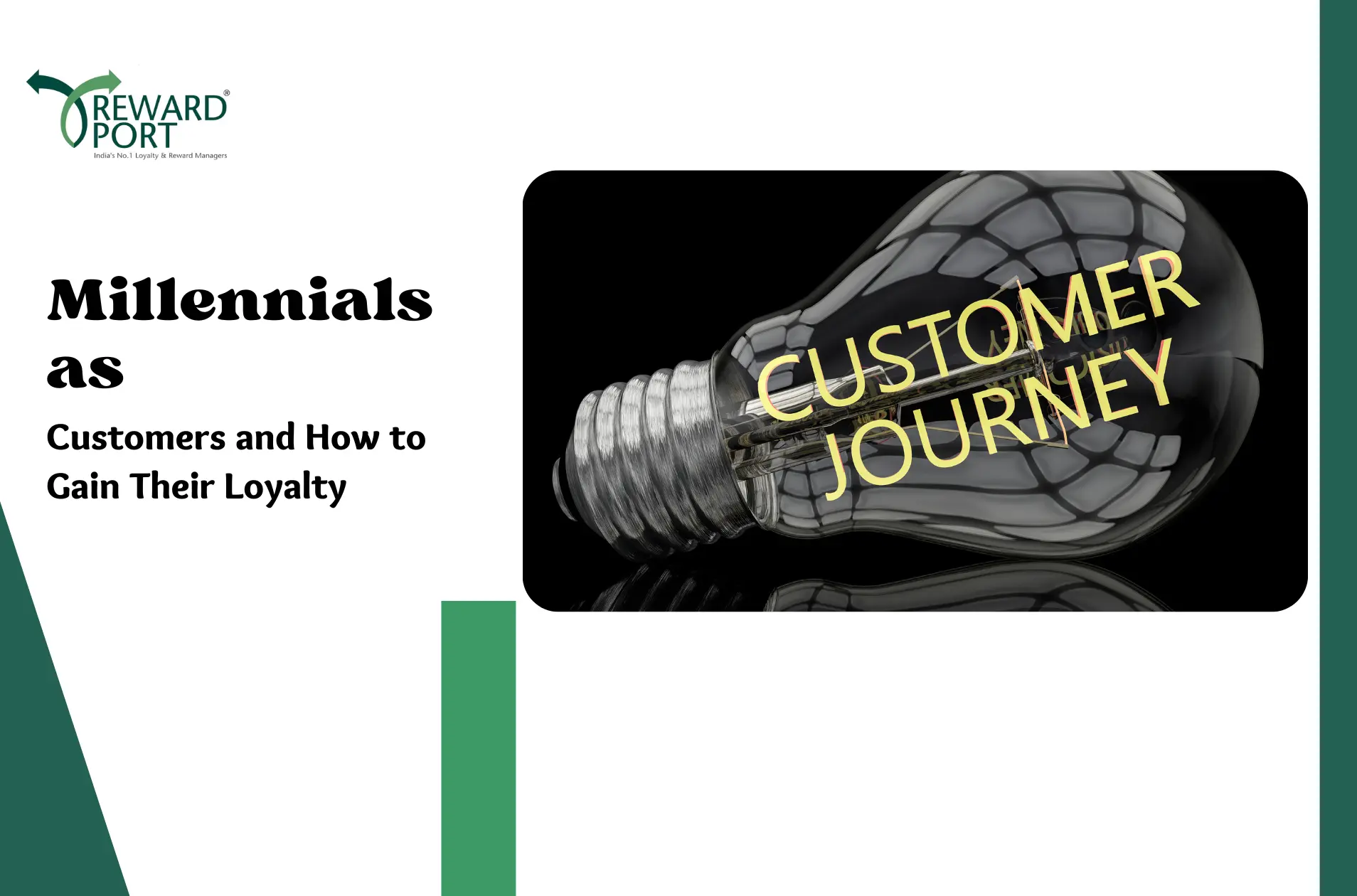
Millennials as Customers and How to Gain Their Loyalty
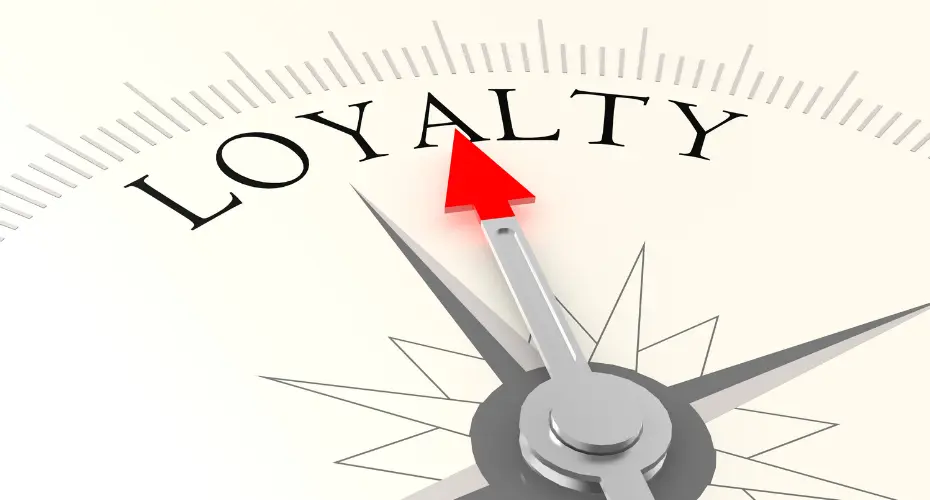
It is the age of the millennials — also commonly known as the Gen Y. This savvy generation not only comprises smart customers, but also include decision makers in top firms.
Holding the largest share in the consumer marketplace, they have taken it hands on to change the rules of how brands engage and conduct their customer-experience design. It’s both easy and difficult to gain millennials’ loyalty. But the job is half-done once their tech-savvy psyche is grasped!
1. Customer-facing technology can’t be slow or complicated
Millennials have always embraced and aligned themselves with technology. So a user experience that is not friendly, simple, fast and advanced, is generally frowned upon by consumers. Companies should be careful not to present an obsolete process or a complicated system to consumers that will keep them away.
2. Smartphones have been the norm for millenials
Millennials are used to getting everything immediately and experiencing everything in real time. The queries need to be attended to as soon as possible and in an authentic language; otherwise, the customer moves on to someone else who understands him/her more.
3. Purchasing, for millennials, is a social experience
Engaging on social media is a part of everyday life for millennials. Often, these posts concern their consumption activities, their next purchase or what they might be looking for. This greatly affects businesses — as the opinion and review of one consumer could influence another.
4. Millennials seek an authentic and engaging experience
Which is why the company website should include a FAQ page — how to go about making a purchase, detailed repercussions of what could go wrong, or any sort of guidance. This can be done either through articles or videos — where customers can discover quick-fix methods and find instant solution to all their problems.
5. Interference or help from customer care is considered tedious
This means that they are self-reliant too and do not need customer-care executives getting in the way, just to mess up their whole experience. More often than not, they would prefer self service.
6. Surprisingly, they also want to co-exist
They’re open to new experiences and want to associate with the brand more than with just a transaction. To speak plainly, millennials are adventurous and seek the same from the brand. For example, a cause supported by a favourite company would also be supported by the loyal customers.
The bottom line is that — nothing with the millennials can be taken for granted. The skeptical approach of the previous generations also needs to be done away with. They move fast, like to experiment and are prone to changing loyalties only after one bad experience. It would also be good to know what the target audience is, in order for customer service to be innovative, seamless and top-notch on the whole.

The Growing Needs of Social CRM
Customer Relationship Management
This is the name for any system or model, accustomed to manage a company’s interactions with its current or future shoppers or customers.
This system could be a piece of technology designed to manage, organize, change and synchronize the entire client-facing areas in your company — from sales and marketing to client service and technical support.
It offers you time to develop the different areas of your business, while providing you with the assurance that you’re not losing your existing shoppers. It helps you in responding to new inquiries in an economical manner.
It also permits you with the time and freedom to target different areas of your business, while you are assured with the knowledge that an automatic system is keeping you and your team up-to-date and totally conscious of your clients’ needs.
There are more advantages of adopting a great CRM . As of now, simply keep in mind that keeping the client at the soul and heart of your business strategy is that the key to success.
CRM in the social world:
Of course, ancient channels like telephone or email aren’t any longer the sole channels, whenever conversations between the company and client happen. People are contacting brands for everything — from general queries to compliments and complaints via social networks.
The digital world is getting complex and we’re seeing a lot of broader fragmentation in the way that customers are using different channels.
It makes things terribly difficult for the client service team. Customers hop across varied channels so as to complete even the simplest of tasks, whether or not it’s shopping for merchandise from a brand or checking the opening hours of a retail shop.
However, chances are, all the channels are operated by different folks with different agendas and priorities. It’s entirely easy for a client to move across channels and have a totally different experience with each channel.
Therefore consistency is a must.
Early days of social media
Here’s a neat summation of the early days of social media.
As social media channels became popular, they were embraced by users to support conversations with brands and different customers. Customers were not passive recipients of data. They had unrestricted access to data and content from their peers.
Brands had no direct management over these conversations and would, at best, intervene in them at an opportune moment, e.g. create a post during a forum discussion thread.
The default communication dimension was client to client and therefore the primary goal of the social CRM model was engagement, resulting in an increased customer experience — with a deal being a secondary consequence, not the first goal. The shopper was currently in full control.
It simply goes to point out why it’s a must for each brand to observe mentions of itself on Twitter.
Current days of Social CRM
Brands must incorporate social media into their CRM strategy in response to their customers’ adoption of the same.
Social interactions might not directly lead to immediate conversion. However, they can promote engagement which will indirectly generate leads, produce authoritative relationships and build confidence within the brand, eventually driving future sales.
Every touch point should be recorded in a CRM system. Thus, all the knowledge concerning any last purpose of contact, notwithstanding channel, is created out there to anybody at within the organization.
Differences between CRM and social CRM
Understanding the variations between social CRM and traditional CRM models will facilitate marketers’ approach toward the social CRM program style.
Best practices of social CRM
Social CRM is regarding client engagement, not management, because brands and marketers are not in control of conversation anymore.
Social CRM thus sees a shift — focused from sales to relationship-building conversations — lead by a belief that enhanced client experiences with engagement can ultimately drive sales. The key to success is to give the choice to shop for as a secondary instead of the first focus.
Use the regular contact opportunities afforded by social media as a way of staying somewhere close to the front of customers who aren’t ready for purchase yet.
In the meantime, keep them engaged with helpful, valuable content and knowledge. Keep in mind that ‘valuable’ will mean many various things though. Amusing, academic or informative content is effective. A fast response to a relevant question is effective.
Connecting customers with people or brands which will be relevant can even be valuable. And something that may either make a shopper feel special or save him time, cash or problem will definitely foster a deeper sense of brand name loyalty.
Social CRM is regarding being patient and organized. Customers take smaller steps down the sales funnel. However, the long-term gains are often far more rewarding.
This is clearly a totally different sales model to the normal sales-orientated processes. The foundations of engagement are modified by social media because of its omnipresence in people’s lives and therefore the expectations that have changed with it. Grouping social together with your existing CRM strategy can mean your company matching those expectations and hopefully surpassing them.
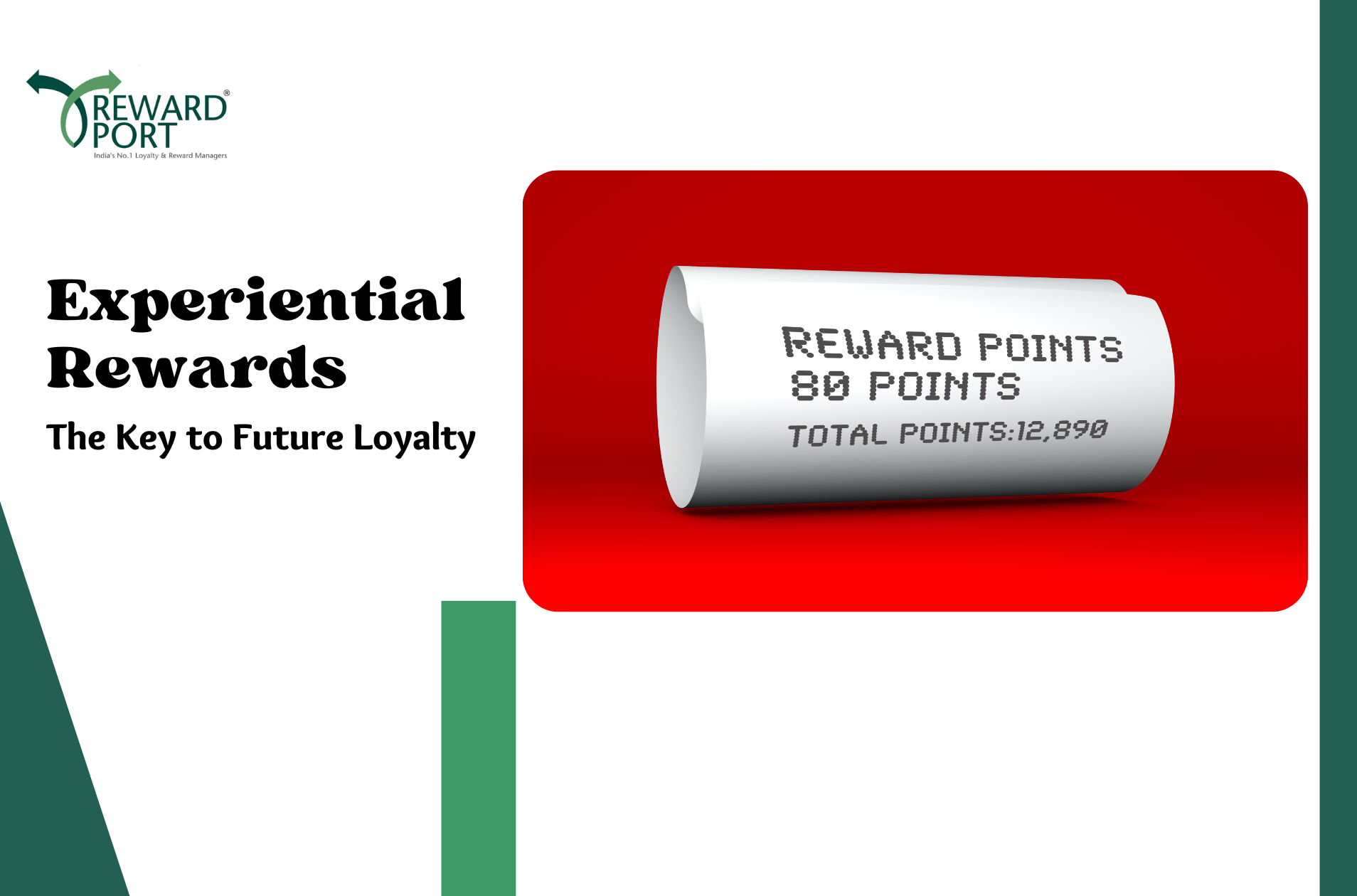
‘Experiential Rewards’- The Key to Future Loyalty

A memory can be a very powerful thing. Our lives are defined by our memories, the experiences that we have. These experiences count not only in our personal lives but also in our professional ones. Loyalty programs have long been a practice of materialism; however, the trends seem to be changing. The key is the term “experience”.
No matter the industry you belong to or are interested in, everyone seems to be discussing this somewhat subtle way of rewarding your best customers.
You probably don’t remember how you spent that last bit of cash in your wallet (groceries, diapers, gas for the car?) but you do remember that first time you got up on water skis, or that gorgeous sunset from your last beach vacation, or the time you sang your favorite song at karaoke and actually killed it
Almost everyone has taken a picture of a meal and posted it on Instagram, Snapchat or Facebook in the last month. That’s sharing your experience with your social circles—and in a small way, makes you part of the experience economy. The experience economy was coined in the late 90s but continues to remain relevant—even more so today based on other economic changes.
The experience economy occurs when a company intentionally engages individuals in a way that creates a memorable event. That includes consumers like in the example above and extends to all people you’re looking to engage and motivate.
Let’s take a closer look at why experiential rewards are the way forward:
1. Personalization Is Key
Personalization is tailoring a service or a product to accommodate specific individuals. With the emergence of artificial intelligence and other machine learning capabilities, consumers expect to be treated like the individuals they are. The more we know about our customers, channel partners and employees, the easier it becomes to offer rewards they trust and value.
Put yourself in their shoes.
How do they want to receive rewards?
Is it a digital experience?
Do they prefer a gift delivered to their home where their family can take part in their achievements?
These are just a few examples of the myriad of ways we can stay in touch with participants today with the reward experience.
2. Experiential rewards are personal and become part of our identity
We enjoy telling stories. Above all, experiences help to create stories which are inherently shareable. The human brain is wired to compose, remember, and share stories. And so, a reward or a recognition ceremony that lends itself to a story is more likely to be shared and remembered.
Who would not find it interesting and comfortable to share stories about a recent vacation, a hand-pottery or night-trekking experience, vs. their last purchase? The stories that a unique or indulgent experience can generate, might even become a part of your organization’s lore, gaining a life far beyond the actual award itself.
And in fact, experiences also offer high social currency, photos or videos for social accounts of the millennial workforce. Studies show that millennials prefer experiences over consumer goods.
3. Experiential rewards although by nature are short-lived but create healthy long-term happiness
There is actually a hell lot of difference between offering a discount and handing over a customized gift worth to your customers. Though the monetary value of both the rewards is same, the experiential value is significant in the latter case. Simply because you are giving them what they have been aspiring to the most. Apart from creating a huge treasure trove of memorable experiences, it is making their lives a tad better in terms of happiness.
Ultimately, the power of experiential rewards is the combination of inspiration and aspiration. Experiential rewards inspire your best customers by giving them positive associations that last much longer than a transactional reward.
These unique, shareable experiences will also help you build a brand community that gets customers excited, expanding your marketing reach and further solidifying the idea that your brand really is the ultimate solution.

5 Loyalty Trends to Look Out for in 2025
Planning to introduce new loyalty programs for your customers in 2025? You may want to consider the ones listed below in this blog.
We have witnessed significant changes in the loyalty program landscape in recent years. Digitization changed a lot of things a few years ago and now the rise of AI and Machine Learning technologies is reshaping the way customer loyalty works. Gone are the days when a huge newspaper ad could convince your consumers.
A new age of business has emerged and it has been bringing remarkable changes in every aspect of modern marketing ethics. When information is easily accessible everywhere, you can’t sit back and wait for your consumers to knock on your door.
You need to be one step ahead to maintain long-term consumer loyalty. The line between the public and private sectors is slowly evaporating and everyone from SMEs to big corporate honchos are trying to introduce new and technologically advanced loyalty programs to attract their consumers.
The future looks innovative and if you are planning to introduce a new set of loyalty programs for your consumers then you must check the following 5 trends.
1. Transcendental Consumer Experience
New-age consumers don’t want to purchase a product, they want to experience it at a personal level. Lives are moving at dizzying speeds and people tend to forget things that aren’t right in front of their eyes.
Being present and constant in day to day life has become important and consumers want to be addressed as the same person by the brand across all channels of communication. Brands have started realizing the fact that they need to become their client’s friend through their e-commerce, social media pages, and loyalty platforms.
You need to count each and every available information about your consumers and create a personalized out-of-this-world experience that will make them feel special and eventually, it becomes easy for them to remember you.
2. Careful Utilization of Visual
Every social media platform has started its own live–streaming services. Be it X (formerly Twitter), Facebook, or Instagram. Visuals will surely replace the static mode of communication in the foreseeable future. But you need to utilize it carefully since the competition for scrolling content is getting fierce.
With ads popping up in almost every network, advertisers are living in a fear of ad fatigue. We recommend using short and crisp videos that don’t trouble the viewers.
3. Impact of Machine Learning
Currently, businesses are using machine learning for four different purposes. To create user-generated content, to build meaningful conversation with consumers, to predict consumer behavior and to help consumers find products.
With a rapid generation of data and the capability of massive computing power, machine learning has become the most useful way to detect anomalies. Machine learning is very useful to gather appropriate data, and introduce personalized reward points for your consumers. It helps gather accurate information in real time.
4. Instant Rewards Points
We know alerts are annoying but no one can deny the impact of reward point texts from their favorite shopping destination. Millennials and Gen Z people are not just looking for high-quality products, but also good experiences.
They always tend to question the traditional ways and prefer notifications more than calls on their phones. For example, a push notification to remind insurance renewal is necessary but 20% cashback along with the renewal is an attractive prospect.
5. Travel Experience as Reward Point
Just go through recent promotional offers by 10 different brands, and you will find at least four of them offering luxury gateways to their consumers.
Millennials and Gen Z people are experimental in nature and they are always ready to explore a new place. Traveling has become easier than before and short city breaks appeal to consumers more than cash reward points.
Why Choose RewardPort?
Technology and the internet have played vital roles in changing the course of a business in recent years. Don’t hesitate to hire someone if you don’t know the current trends and updates. Your consumers are smarter than you and they know how to explore the market. Partner with RewardPort and get your loyalty programs aligned with the interests of your customers.

Common Pitfalls of Customer Loyalty Program Design
Customer loyalty plays a very important role in maintaining a long-term and successful business and requires a detailed understanding of human behavior and their desires. A well-designed loyalty program will help in customer acquisition, engagement, retention and increasing number of loyal guests who repeat purchase thereby boosting revenue. On the other hand, if the program is poorly designed and implemented, it can have a negative impact on the company’s success.
When marketers are designing or improving their loyalty programs they should avoid the following pitfalls:
1. Undefined business objectives:
Loyalty schemes are designed to help customers develop an emotional connection with the brand. It’s of prime importance to understand the business requirements and link it to the overall business objective and brand values.
For a customer loyalty program to be really effective it is important to make customers a priority and keeping the communication consistent so that they can establish a connection with the brand and are offered something valuable.
2. Treating all customers as equal:
It’s extremely important to understand every consumer is unique. Each of them has a different buying behavior and understanding how consumers behave will help design a profitable loyalty program. High-value customers are very vital to your brand as they churn more value to the brand and are loyal.
Hence, it is important to differentiate between customers and treat the high-value customers differently. A key to this is personalizing their reward system and gift them such that they feel special.
3. Complicated program design:
Customers crave a hassle-free rewards program during the entire process of joining a program and claiming rewards. A loyalty program is more as long as it is simple to use and is convenient for the customers. If too many steps are involved in the earning of points people won’t bother to claim their rewards as it’s too much effort.
This will develop resentment among the customers even when the brand message says that they value their customers as they don’t give enough importance to a buyer’s time. A program will be successful provided the entire design of loyalty program is well- communicated and transparent in its approach.
4. Ignoring the data:
The fundamental to a lucrative loyalty program lies in understanding the data collected from consumers every time they shop, review and refer it to others. It’s vital that business collect all this data, analyze it thoroughly and then use this information to create tailor-made rewards for individuals.
5. Frequent changes or no improvement at all:
It’s inadvisable to keep changing the existing mechanics of a reward program too often. Letting a member have enough time to accumulate points and redeem benefits will help businesses gain their trust and establish a bond with them.
If the window between the two is very narrow and the program does not give enough time to earn points and then be able to redeem before expiring, the customers won’t feel appreciated and they will be hesitant in promising the brand their loyalty.
6. Making redemption difficult:
Because of delays and inadequate fulfillment of rewards, some loyalty programs make it very arduous for members to redeem their points and corresponding benefits. This may lead to loss of interest in the program and give up on the brand. Hence, the redemption should be instantaneous and convenient with instant gratification.
7. Not rewarding every purchase:
Quite a few loyalty programs only reward members for some of the purchases they make and hence fail to motivate them to spend more and earn benefits. It is important to pay attention to rewarding the high- value customers because their purchase margins are high but it’s equally important to reward those at the bottom of the pyramid too.
Giving a customized experience to all members at different levels of the pyramid will only prove fruitful to the brand.
By avoiding these common loyalty pitfalls, most of which occur in the program design stage, you can ensure a reasonable chance of launching a successful loyalty program well before you put your program on the market. Retailers need to understand what their customers want, bake in a compelling value proposition; segment your customers; and use data to build relationships and put them front and center when planning the program for optimal success.

A Way To Think About Modern CRM
Modern CRM systems have been developed to evaluate big data analytics for proper customer insight statistics. To earn customer loyalty, an organization must learn about its customers’ purchase routine through an ever-increasing array of channels: the web, mobile phones, email, social media, e-commerce, contact centers and through bricks and mortar outlets.
People and process design must come before any successful implementation. Effective communication about the advantages of modern CRM systems, training and significant development of a new collaborative culture is essential before the technology can be implemented effectively.
When compared to the paid media evolution over several generations, from print media to radio to TV, to the many co-existing digital formats of today, customer relationship management is considered antiquated, yet effective to its core.
CRM is multichannel and no longer confined to direct email services. It encompasses push and in-app messaging, SMS, addressable display and social, as well as messaging apps embedded on a site or in social media platforms like Facebook Messenger. At the core of any CRM program is a robust set of customer data.
Modern CRM combines the historical demographic and purchases history with cross-channel permissions and engagement across all channels, from the perspectives of both marketing and customer support. It allows for personally identifiable information (PII) and anonymous data to be stored until a link between the two can be identified and then connected to enhance knowledge.
Modern CRM is powered by data across all of an enterprise’s business lines. This consolidation gives companies the ability to look at the entire customer base and leverage information gathered from one phase for another purpose within legal boundaries.
The ease of accessibility of the data, almost anywhere, anytime, is a key tenet of modern CRM. The point of consideration is the expectancy of Modern CRM to leverage the latest enterprise data at every touchpoint.
CRM and loyalty tend to be completely different programs. Yes, there should be initiatives that are specific to loyalty programs, but modern CRM takes the loyalty data into account and decides the desired action for every touch point or campaign.
Your customer data allows you to identify your best customers and to develop a customer strategy for a better conversion rate. When people are on owned properties such as a website, your ability to entice visitors to sign up, fill out, download, etc. are enhanced by the previous customer experiences.
CRM data and the knowledge of what has worked at the enterprise level, in conjunction with enterprise decision-making, allow us to make the best choices to convert a browser or prospect into a hand-raiser, a customer, or a full-fledged advocate.

Why do You Need to Protect Your Rewards & Loyalty Programs with AI?
We may deny but we can’t ignore the importance of free dinner at a posh restaurant or a free holiday trip to Hongkong. Ironically, it feels good to be recognized by your employer or your favourite service provider.
This is a well known fact to companies and they never leave a stone unturned to reward their customers whenever they realize we have spent enough for them. It’s a good customer retention practice and it holds true cash value. However, we are living in the era of fraudsters and without proper protective measures, it falls under their radar.
The Problem
Almost every loyalty program faces instance of program fraud. This is a serious breach and invites a lot of trouble. A few of them are mentioned below.
- Increased cost to replace points
- Lowered NPS that leads to customer dissatisfaction
- Loss of loyal customers`
Secondly, there are cyber crime cells but there are even more smarter fraudsters who finds a new way to open fake rewards account. Every now and then reward points and miles are getting sold online. According to a report by software security provider McAfee in 2014, cyber crime costs the global economy more than US$450bn annually.
On the other hand, the face of customer loyalty programs changing continuously. Almost every customer expects to be seen as a unique customer with personalized needs. Thus, companies have to adapt solutions that assure them customer loyalty along with security. This is the scenario where AI comes to rescue.
The Solution
According to experts, AI is the only way out by implementing which companies can secure customer loyalty and reach an audience of millions. AI runs on algorithms and it can differentiate customer’s needs and preferences in real time. It helps data analysis in personalizing customers and create real time data that works far beyond numbers.
It uses state-of-the-art technologies like voice recognition, natural language understanding and dialogue management to create personalized intelligent assistance. These assistants are highly secured and communicates with human beings in realtime to complete a task.
The world economy is slowly turning digital and it has changed the what customers expect from their service providers. AI implements services like voice banking and virtual chat assistants that provides immense scope for customer loyalty.
AI also augments employee performance since digital assistance cuts down a lot of human effort. This advanced approach also ensures safe handling of reward points without damaging customer experience.
It has the ability to predict future instances of fraud before they occur by reducing the amount of human intervention. Thus, it creates less friction for the customers and delivers result within the given period of time. The good news is – AI is ever evolving and there’s no chance of it becoming outdated.
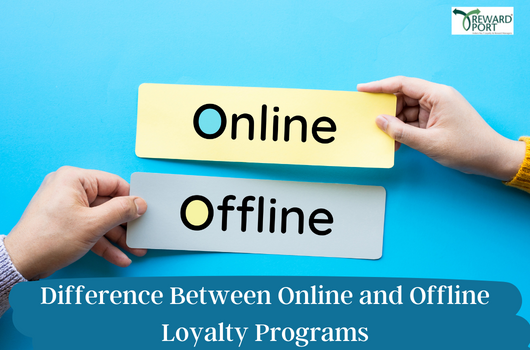
Difference Between Online and Offline Loyalty Programs
Retailers appeal to customers’ buying habits with incentives in order to outsell their competition. This trend has been in practice since the beginning of time. Over years, retail has continued to evolve, and following the birth of ecommerce in the early 1990s, loyalty strategies have made a migration to the digital platforms with definite motives.
With all of the online and offline rewards programs emerging every passing moment, one might begin to wonder where exactly the differences lay between them. A detailed study of both the platforms leads to a clearer opinion about the debate that has raised quite a few opinions.
Offline Loyalty Programs:
Location has always held significant consideration on its part, for customers who choose to purchase products in-store, rather than an online purchase. However, additional expenses may be associated with visiting a particular store to purchase a certain product.
Although, customers tend to come back on their own simply due to the close proximity to a specific store, retailers must still be aiming to appeal to their customers’ best interests with their loyalty programs. Following are some of the strategies tailored to benefit the offline sales environment:
1. Social Sharing:
High chances prevail that customers will browse through physical stores through social networks before the purchase. The current generation of customers, in particular, spend a considerable amount of time on mobile devices, checking into social media accounts and with such exposure, harnessing social sharing power is a genius way to entice customers to shop with you.
Rewarding customers for sharing their experiences with the products on platforms like Twitter and Instagram gives retailers the opportunity to create brand influencers while incorporating their brand into the everyday social fabric of their customer base.
2. VIP Tiers;
VIP tiers allow retailers to acknowledge and evaluate their best customer base with exclusive benefits and rewards. Simply effective at increasing customer engagement, VIP tiered programs give the the customers an opportunity to earn more, which in turn encourages them to spend more.
VIP programs have emerged as an excellent solution for brick-and-mortar retailers, because once a customer is committed, they are more likely to engage themselves with a specific store. It’s the perfect example of how exclusive benefits, as opposed to discounts, set a brand apart from the herd.
Online Loyalty Programs
One of the most significant reasons people prefer to shop online is discount prices, which doesn’t come as a surprise given the fact that many such people don’t even have a savings account.
Online shopping has taken the commercial merchants by storm, and is soon to dominate, which raises a need for loyalty programs to ensure a customer base. With the facility to shop around and buy at the lowest price in a matter of seconds, there are many ways ecommerce merchants can work to keep their customers hooked.
1. VIP Tiers:
VIP Tiers is a perfect example of some of the strategies which can be incorporated in both online and offline platforms. Tiers are especially known to industries like supplements and cosmetics because they have intense levels of competition.
Brands that reward customer loyalty with benefits and transactional rewards are more appealing in a more obvious sense. Offering customers access to exclusive events or product launches are some of the many ways that retailers can give recognition to their VIP customers, considering that these loyal customers are responsible for a majority of their business.
2. Engagement Touch Points:
One must provide the customers with ways to engage outside of the shopping cart if one wishes to make his online brand stand out. With a rising trend of using smartphones for all manner of online activity, people are searching for experiences that complement their lifestyle.
Referral programs are an excellent way to encourage customers to engage with one’s brand throughout their everyday necessities, and can be seen as the evolution of the old school reward systems.
No matter what you’re selling, where’re you’re selling; whether it’s online or offline, a loyalty program is a proven way to acquire a huge customer base. Through exclusive rewards, beneficiary initiatives, and social awareness, one can treat customers to a lifestyle and loyalty experience unlike anywhere else, making one’s brand a priority for them, every time they go shopping.

The Future of Loyalty Programs
The success of an idea depends on how adaptable it is to the current needs of the system. The ability to amend brand strategies is the key to longevity irrespective of the industry, including the wide domain of customer loyalty.
In recent surveys, a massive 65% of the CMO council agreed upon the significance of investing in loyalty strategies. A sudden heat is expected in the arena of loyalty, sooner rather than later.
A brief study of the Future Loyalty programs in the following section suggests that the coming times will be of huge significance and the right investments might ensure a smooth systematic function.
The future, in case of loyalty programs, is set to drift away from pushing marketing strategies on customers, onto a more promising approach of making the experience a little easier for the customer.
With an approach as simple as deploying loyalty program to make customers’ lives easier, or providing an exclusive loyalty program that rewards via a customisable experience based on individual customers’ needs, the future has taken a turn for good.
Retailers, who hope to succeed, must possess the content, a strategy and insightful ideas that can be seeded in conversation with customers to figure out their needs and compliment them in a more suitable manner.
A trend of feedback loops with personalisation and targeting engines is set to present itself to the market. The power of a positive review will dominate the centre stage – retailers and brands will be pushing to engage in conversations, allowing them to progressively learn and develop an unrivalled experience for their customers.
Loyalty programs that contextualise all relevant data points shall emerge as victors– delivering push marketing messages and lucrative offers to drive customers into the stores or onto the e-commerce platforms is not going to be enough.
Successful retailers and brands must know and comprehend what their customers tend to and analyse the data to fuel targeted conversations that enable the loyal customers to open up about their experiences. Negative criticism is set to trend with a strong, reassuring vibe attached to it.
Loyalty programs, if aimed for huge success, need to continue to support an overall experience of the brand, and should be designed with customers, taking in consideration the minutest of details.
The retailers and brands need to embrace the need of the hour; they need to give up control. The real power of loyalty is to enable customers to voice an opinion; loyalty programs will increasingly align themselves to the customer experience side of businesses and emerge as a channel for developing connections with loyal customers on a personal level.
The future of loyalty programs needs a retailer or a brand to enable a broader range of interaction with their customers. Personalisation and customisation, are therefore the keys to ensure the right elements of customer experience are delivered to the loyal customers.
They generate a high value of engagement and equally, retailers need to create opportunities through their loyalty programs for customers to engage with their interests.
Loyalty programs have the ability to connect the dots of data from across the multichannel experiences and recognise the areas to be emphasized upon. Mining the data to create these opportunities to strengthen and improve one’s service is an invaluable and relatively untapped resource for retailers.
With such advancements and a rising need to acquire the customer base, the future of loyalty programs, it seems, is infinitely bright and headed towards a remarkable journey.

